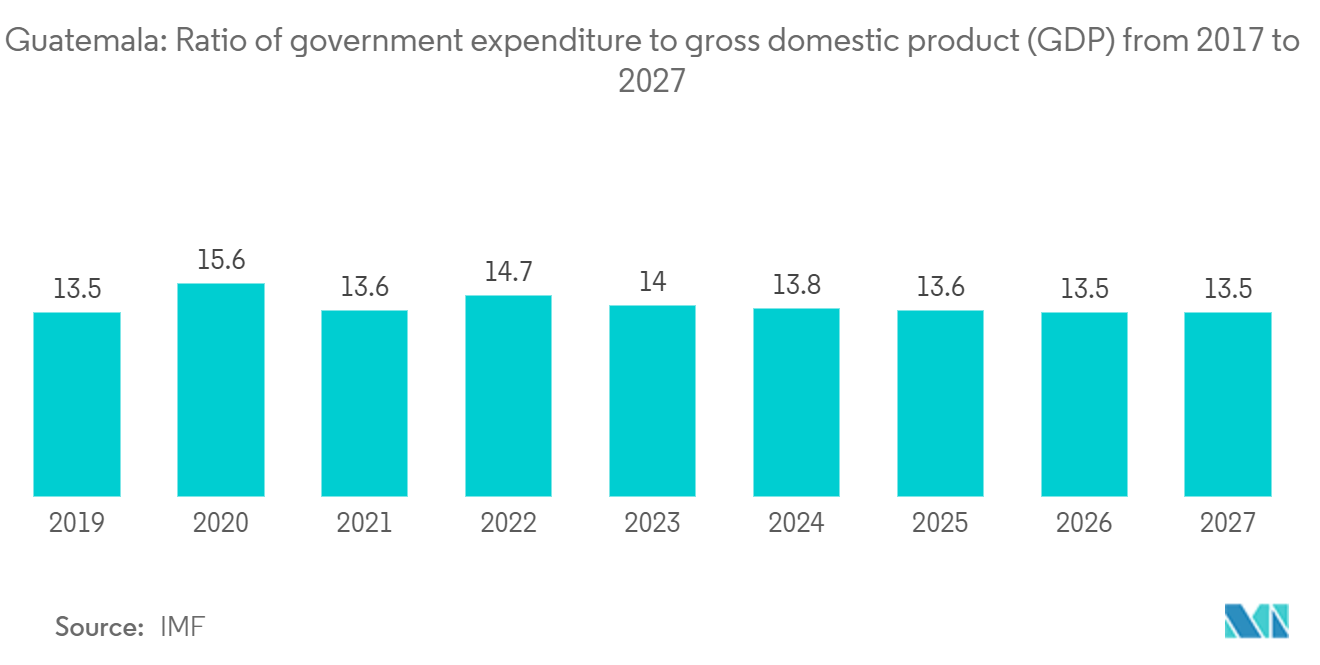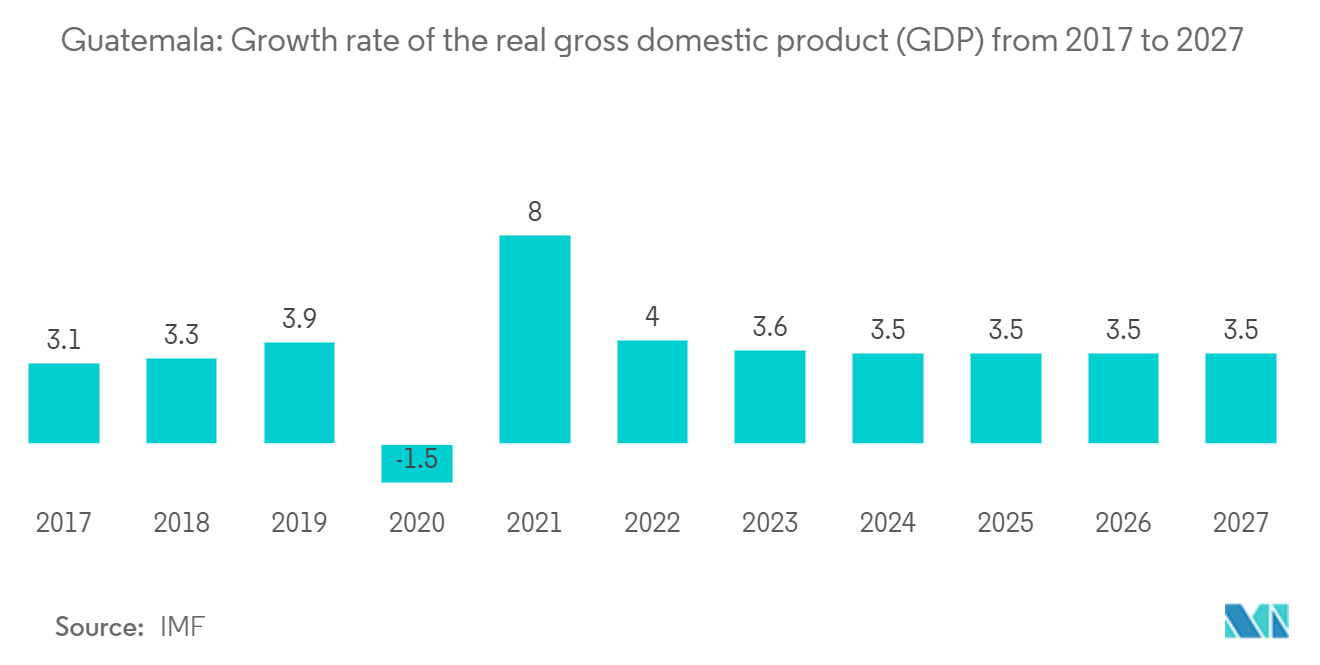Market Trends of Guatemala Construction Industry
Increasing residential construction in the country is driving the market growth
- There is a massive demand for affordable housing in many parts of the country, propelled by rapid urbanization. Apart from this, there is a significant increase in demand for big housing spaces due to the need for better lifestyles.
- The Element Building, currently under construction in Guatemala City, is a 14-story building that will house commercial space, corporate offices, and eight-story studio apartments. The building is not only for its stunning appearance but also for being the first building in Guatemala City to be constructed using seismic isolation solutions to protect against earthquakes that could affect this part of the world. Stand out.
- Meanwhile, it already provides numerous seismic isolation solutions for buildings in other regions of Latin America. The building is seismically protected from violent ground movements by 27 of the LASTO LRB isolator bearings on which the building is built. These reed rubber mounts range in diameter from 850 mm to 1,200 mm and have a maximum vertical load rating of 20,000 kN.
- These isolators work in conjunction with seven RESTON®SLIDER bearings, each with a rated vertical load capacity of 3,450kN. Both types of seismic devices allow up to 300 mm of horizontal displacement in any direction during an earthquake. Pininfarina, a global Italian design icon, is pleased to announce the groundbreaking of the Torre Cala luxury residential high-rise project in Guatemala City. Working with leading Guatemalan residential developer Grupo San Siro, the project is expected to be completed in 2024.
- According to the World Bank, the remittances in the country rose to a record-high USD 1,592.5 million in May 2021, with annual growth accelerating to 28.8% year on year in the month (April: +23.1% yoy) 2021. Furthermore, on a 12-month rolling basis, remittances rose to 28.5% year on year in May 2021, down from April’s 29.7% rise. Remittances are one of the key sources of income for families in Guatemala that tend to follow labor market trends in the United States, where the majority of remittances originate. The rise in income from the US economy is expected to continue supporting remittances and household spending in Guatemala.
- Household consumption spending in the country increased by 15.4% in the second quarter of 2021, which is associated with higher income from family remittances and the retrieval of thousands of jobs, according to a report by the Bank of Guatemala. On the other hand, the central bank report indicates that the number of contributors and salaries of the Guatemalan Social Security Institute (IGSS) during the second quarter of 2021 showed a growth of 10.8% and 11%, respectively, which would be associated with the normalization process and the gradual reopening of economic activities.

Rise in investment among energy and transport sector
- The sustainable construction industry in Guatemala experienced one of its best years in 2022. The Guatemala Green Building Council (GGBC), an institution devoted to implementing sustainable practices in construction in the country, reported that 10 projects obtained sustainable construction certification, a record number for the Central American country.
- As part of the Zacapa Solar Project in Guatemala, Solar Delivered the first fixed tilt mounting system to the Central American market. The 9MW distributed solar power project was developed by Kruger Energy. This backdoor project in Zacapa, Guatemala, is now operational and will provide paper companies with more reliable and affordable energy at a given cost for the next 35 years.
- The project faced several challenges, including many steep hills with gradients over 15%. Solar FlexRack's experienced in-house engineering team helped Zacapa Solar overcome the site's challenging terrain with design assistance and a proven front-to-rear drive piling system.
- About 40% of Guatemala's electricity comes from fossil fuel-based power plants. Electricity charges from power companies fluctuate greatly from day to day. Renewable energy projects like the Zacapa Solar Project can help ensure financial and environmental sustainability by reducing dependence on expensive, polluting, and unpredictable energy sources. As part of the Zacapa Solar Project in Guatemala, Solar Delivered the first fixed tilt mounting system to the Central American market. The 9MW distributed solar power project was developed by Kruger Energy.
- This backdoor project in Zacapa, Guatemala, is now operational and will provide paper companies with more reliable and affordable energy at a given cost for the next 35 years. The project faced several challenges, including many steep hills with gradients over 15%. Solar FlexRack's experienced in-house engineering team helped Zacapa Solar overcome the site's challenging terrain with design assistance and a proven front-to-rear drive piling system.
- About 40% of Guatemala's electricity comes from fossil fuel-based power plants. Electricity charges from power companies fluctuate greatly from day to day. Renewable energy projects like the Zacapa Solar Project can help ensure financial and environmental sustainability by reducing dependence on expensive, polluting, and unpredictable energy sources.


